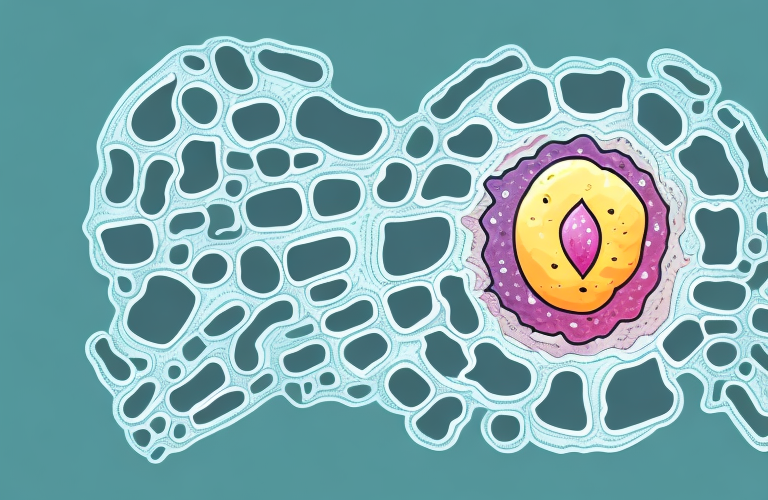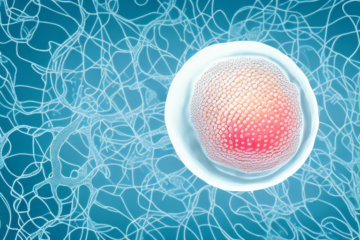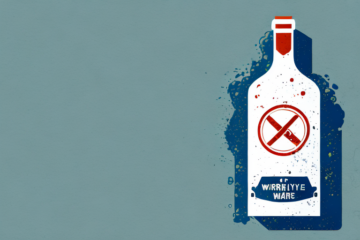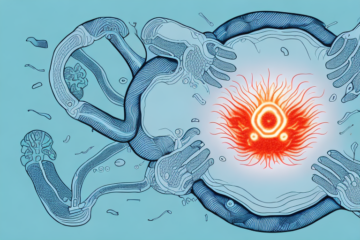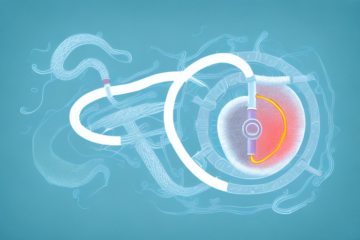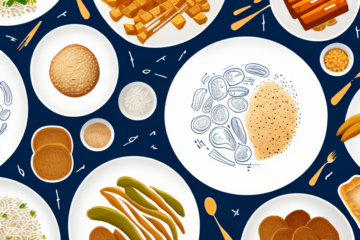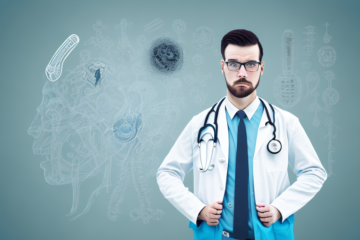The gallbladder is a small organ located in the upper-right side of the abdomen, just below the liver. It stores and concentrates bile, a digestive fluid produced by the liver that helps break down fats in the small intestine. While the gallbladder plays an important role in digestion, it is not essential for survival. In this article, we will explore the anatomy and function of the gallbladder, common gallbladder conditions, diagnostic procedures, treatment options, and prevention strategies.
What is the Gallbladder?
The gallbladder is a pear-shaped organ that measures about 7 to 10 centimeters in length. It is made up of three main parts: the fundus (the top portion of the bladder), the body (the middle portion), and the neck (the narrow bottom portion). The gallbladder is connected to the liver and the small intestine by a system of ducts that allows bile to flow back and forth as needed during digestion.
The gallbladder plays an important role in the digestive process by storing and releasing bile, a fluid that helps break down fats in the small intestine. When food containing fat enters the small intestine, a hormone called cholecystokinin is released, which signals the gallbladder to contract and release bile into the small intestine. Without a functioning gallbladder, the body may have difficulty digesting fats properly, leading to digestive problems such as bloating, gas, and diarrhea.
Anatomy and Function of the Gallbladder
In addition to storing and concentrating bile, the gallbladder also helps regulate the amount of bile that is released into the small intestine. When you eat, your body signals the gallbladder to release bile into the small intestine to help digest food. Without a gallbladder, bile is still produced by the liver, but it flows directly into the small intestine rather than being stored and concentrated in the gallbladder.
Furthermore, the gallbladder plays a role in the absorption of fat-soluble vitamins, such as vitamins A, D, E, and K. Bile, which is produced by the liver and stored in the gallbladder, helps break down these vitamins so that they can be absorbed by the body. Without a gallbladder, the body may have difficulty absorbing these important vitamins, which can lead to deficiencies.Another important function of the gallbladder is to help eliminate waste products from the body. Bile contains waste products, such as bilirubin and cholesterol, which are removed from the body through the digestive system. Without a gallbladder, these waste products may not be eliminated as efficiently, which can lead to health problems such as jaundice or gallstones. Therefore, it is important to maintain a healthy gallbladder through a balanced diet and regular exercise.
Common Gallbladder Conditions
There are several conditions that can affect the gallbladder. Some of the most common include:
- Gallstones: Small, hard deposits that form inside the gallbladder.
- Cholecystitis: Inflammation of the gallbladder.
- Bile duct obstruction: A blockage in the bile duct that can cause bile to build up in the gallbladder.
- Gallbladder polyps: Growth on the inside of the gallbladder that are usually benign.
It is important to note that gallbladder conditions can often be asymptomatic, meaning that a person may not experience any symptoms. However, if symptoms do occur, they can include abdominal pain, nausea, vomiting, and fever. It is important to seek medical attention if you experience any of these symptoms, as untreated gallbladder conditions can lead to serious complications.
Gallstones: Causes, Symptoms, and Treatment Options
Gallstones are one of the most common gallbladder conditions. They can be caused by a variety of factors, including genetics, age, obesity, and a diet high in fat and cholesterol. Gallstones may cause symptoms such as abdominal pain, nausea, vomiting, and fever. If left untreated, gallstones can lead to serious complications such as pancreatitis or a blocked bile duct. Treatment options for gallstones include medication to dissolve the stones, shock wave therapy to break up the stones, or surgery to remove the gallbladder.
In addition to the aforementioned treatment options, there are also natural remedies that may help alleviate symptoms and prevent the formation of gallstones. These include increasing your intake of fiber-rich foods, such as fruits, vegetables, and whole grains, and reducing your consumption of saturated and trans fats. Regular exercise and maintaining a healthy weight can also help prevent the development of gallstones. However, it is important to consult with a healthcare professional before attempting any natural remedies or making significant changes to your diet or exercise routine.
Cholecystitis: Causes, Symptoms, and Treatment Options
Cholecystitis is inflammation of the gallbladder that may be caused by gallstones, infection, or injury to the gallbladder. Symptoms may include abdominal pain, fever, nausea, and vomiting. Treatment options may include antibiotics, pain medication, or surgery to remove the gallbladder.
It is important to note that certain risk factors may increase the likelihood of developing cholecystitis. These risk factors include being female, being over the age of 40, having a family history of gallbladder disease, and being overweight or obese. Additionally, a diet high in fat and cholesterol may also increase the risk of developing gallstones, which can lead to cholecystitis.
Bile Duct Obstruction: Causes, Symptoms, and Treatment Options
Bile duct obstruction occurs when a blockage in the bile duct prevents bile from flowing properly from the liver to the small intestine. This can cause abdominal pain, jaundice, and a fever. Treatment options may include medication to dissolve the blockage, surgery to remove the blockage, or surgery to remove the gallbladder.
There are several causes of bile duct obstruction, including gallstones, inflammation, tumors, and strictures. Gallstones are the most common cause of bile duct obstruction, and they can form in the gallbladder and travel to the bile duct. Inflammation can occur due to infections or autoimmune diseases, and tumors can be benign or cancerous. Strictures are narrowings of the bile duct that can be caused by scarring or injury.
Symptoms of bile duct obstruction can vary depending on the cause and severity of the blockage. In addition to abdominal pain, jaundice, and fever, other symptoms may include nausea, vomiting, pale stools, dark urine, and itching. It is important to seek medical attention if you experience any of these symptoms, as untreated bile duct obstruction can lead to serious complications such as liver damage and infection.
Gallbladder Polyps: Causes, Symptoms, and Treatment Options
Gallbladder polyps are growths on the inside of the gallbladder that are usually benign. They may be found during imaging tests for other conditions, such as gallstones. Treatment options may include monitoring the polyps with regular imaging tests or surgery to remove the gallbladder if the polyps are large or causing symptoms.
While most gallbladder polyps are benign, there is a small chance that they can develop into cancerous growths. Therefore, it is important to monitor them regularly and seek medical attention if any symptoms arise. Symptoms of gallbladder polyps may include abdominal pain, nausea, vomiting, and fever.
In some cases, lifestyle changes such as maintaining a healthy weight and diet may help prevent the development of gallbladder polyps. However, if surgery is necessary, it can usually be done laparoscopically, which is a minimally invasive procedure that involves small incisions and a shorter recovery time compared to traditional open surgery.
Diagnosis of Gallbladder Conditions
Diagnosis of gallbladder conditions may involve a physical exam, blood tests, imaging tests, or diagnostic procedures such as an endoscopic retrograde cholangiopancreatography (ERCP).
In addition to these methods, doctors may also use a hepatobiliary iminodiacetic acid (HIDA) scan to diagnose gallbladder conditions. This test involves injecting a small amount of radioactive material into the patient’s bloodstream, which is then taken up by the liver and excreted into the bile. A special camera is used to track the movement of the radioactive material through the liver, bile ducts, and gallbladder, allowing doctors to identify any blockages or abnormalities.
Imaging Tests for Diagnosing Gallbladder Conditions
Imaging tests such as ultrasound, CT scan, or MRI may be used to visualize the gallbladder and surrounding structures to identify any abnormalities or conditions. These tests are non-invasive and painless.
Ultrasound is the most commonly used imaging test for diagnosing gallbladder conditions. It uses high-frequency sound waves to create images of the gallbladder and surrounding organs. CT scan and MRI are also used in certain cases, such as when a more detailed image is needed or when there is suspicion of a tumor or other abnormal growth. Your doctor will determine which imaging test is best for your individual case.
Blood Tests for Diagnosing Gallbladder Conditions
Blood tests may be used to detect abnormalities in liver function, inflammation, or infection that may be related to gallbladder conditions.
In addition to liver function, inflammation, and infection, blood tests can also measure the levels of certain enzymes and bilirubin in the blood. Elevated levels of these substances can indicate a blockage in the bile ducts, which can be caused by gallstones or other gallbladder conditions. Blood tests can also help monitor the effectiveness of treatment for gallbladder conditions.
Endoscopic Retrograde Cholangiopancreatography (ERCP): A Diagnostic Procedure for Gallbladder Conditions
An ERCP is a diagnostic procedure that uses a thin, flexible tube with a light and camera attached to it to examine the bile ducts, pancreas, and gallbladder. During an ERCP, a dye is injected into the bile ducts to help visualize them more clearly. This procedure is performed under sedation and may take a few hours to complete.
ERCP is commonly used to diagnose and treat conditions related to the gallbladder, such as gallstones, inflammation, and blockages. It can also be used to identify tumors or other abnormalities in the bile ducts or pancreas. In some cases, therapeutic procedures can be performed during an ERCP, such as removing gallstones or placing stents to open up blocked ducts.
While ERCP is generally considered safe, there are some risks associated with the procedure, such as bleeding, infection, and pancreatitis. It is important to discuss the risks and benefits of ERCP with your healthcare provider before undergoing the procedure.
Laparoscopic Cholecystectomy: A Common Surgical Procedure to Remove the Gallbladder
A laparoscopic cholecystectomy is a minimally invasive surgery to remove the gallbladder. It involves making small incisions in the abdomen and using small instruments and a camera to visualize the gallbladder and surrounding structures. This procedure generally takes less than an hour and is done under general anesthesia.
After the surgery, patients may experience some discomfort and pain, but this can usually be managed with pain medication. Most patients are able to go home the same day or the day after the surgery and can resume normal activities within a week or two. However, it is important to follow the surgeon’s instructions for post-operative care and to avoid heavy lifting or strenuous activity for a few weeks after the surgery.
Lifestyle Changes for Managing Gallbladder Conditions
Lifestyle changes such as maintaining a healthy weight, avoiding a diet high in fat and cholesterol, and eating smaller meals may help manage gallbladder conditions.
Additionally, regular exercise can also aid in managing gallbladder conditions. Exercise can help maintain a healthy weight, improve digestion, and reduce inflammation in the body. It is recommended to engage in at least 30 minutes of moderate exercise, such as brisk walking or cycling, on most days of the week.
Diet Recommendations for People with Gallbladder Issues
Diet recommendations for people with gallbladder issues may include avoiding high-fat and high-cholesterol foods, increasing fiber intake, and eating more lean proteins such as chicken and fish.
In addition to these dietary changes, it is also important for individuals with gallbladder issues to stay hydrated and drink plenty of water. This can help to prevent the formation of gallstones and reduce the risk of complications.
Furthermore, some studies suggest that incorporating certain herbs and spices into the diet may also be beneficial for those with gallbladder issues. For example, turmeric has anti-inflammatory properties that may help to reduce inflammation in the gallbladder and improve overall digestive health.
Complications of Untreated or Poorly Managed Gallbladder Conditions
If left untreated or poorly managed, gallbladder conditions can lead to serious complications such as pancreatitis, liver damage, or a blocked bile duct.
One of the most common complications of untreated or poorly managed gallbladder conditions is the formation of gallstones. These small, hard deposits can cause intense pain and discomfort, and may require surgery to remove.
In some cases, gallbladder conditions can also increase the risk of developing certain types of cancer, such as gallbladder cancer or bile duct cancer. It is important to seek medical attention if you experience any symptoms of gallbladder problems, such as abdominal pain, nausea, or vomiting.
Prevention Strategies for Maintaining a Healthy Gallbladder
Prevention strategies for maintaining a healthy gallbladder include maintaining a healthy weight, eating a healthy diet, exercising regularly, and avoiding excessive alcohol consumption.
In conclusion, the gallbladder plays an important role in digestion, and there are several conditions that can affect its function. If you are experiencing abdominal pain, fever, nausea, or other symptoms, it is important to consult with a healthcare provider for an accurate diagnosis and appropriate treatment.
Another important prevention strategy for maintaining a healthy gallbladder is to avoid consuming high-fat and high-cholesterol foods. These types of foods can increase the risk of developing gallstones, which can lead to inflammation and other complications. Additionally, staying hydrated by drinking plenty of water can help to flush out toxins and prevent the formation of gallstones. By following these prevention strategies, you can help to maintain the health of your gallbladder and prevent potential health issues.

